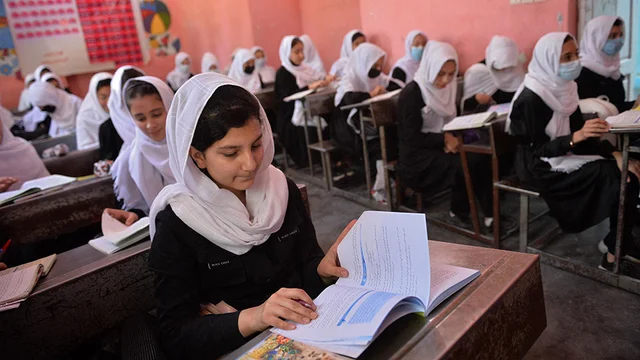
The book on post-9/11 U.S. involvement in Afghanistan is still being written; though, previous chapters are now familiar to most observers. Chapter 1: How the U.S. quickly routed the Taliban, but watched the group reemerge from neighboring sanctuary through a mix of intimidation and appeal to local grievances; Chapter 2: How the U.S. made significant investments in developing Afghan institutions of governance and rule of law, but undermined said efforts by empowering unaccountable local power brokers (in Afghan parlance, “warlords”) for short-term, tactical objectives; Chapter 3: How Afghan officials were regularly cited for corruption and financial mismanagement, but how the U.S. fueled a gold-rush-like situation in a country that had known nothing but conflict and depredation for over a quarter century; and so on. This is the story of the past two decades, or at least a part of it.
There are other chapters to this story, too — much of them laudable and to the credit of sacrifices by the U.S., its NATO allies, and countless, courageous Afghans. The gains made by women, for example, have received widespread attention and will, hopefully, continue to do so. Young women, who had been banned by the Taliban from attending school, now make up over 3.5 million of the enrolled students in the country, including an estimated 100,000 in universities. From being barred from most outside-of-the-home pursuits, women now sit in Afghanistan’s parliament, serve in the security services, and are represented in the media, private sector and diplomatic corps. From one of the most isolated countries in the world 20 years ago, 60 percent of Afghans are now communicating with each other and/or the outside world via mobile technology, with broadband services widely available. And while flawed and oft delayed, elections have drawn millions of determined Afghans to the polls, repeatedly, despite extremist threats. For the roughly 50 percent of Afghans born after 9/11, such progress, even if halting and uncertain at times, has given reason for hope and aspirations, compared to the previous generation which knew little more than brutal civil conflict, displacement, and exile.
While elections, internet connectivity and girls’ education were not factors behind U.S. military intervention in Afghanistan, it is hard to imagine how their reversal would serve anyone’s interests, let alone U.S. national security; an oppressed, impoverished, and isolated country is rarely a beacon of stability.
Ensuring therefore that hard-fought-for gains will be sustained should be a top foreign policy priority for the Biden administration.
The White House, at least, has declared that this is the case; but with the clock ticking down on the U.S. troop presence, and conditions of the withdrawal agreement signed by the previous administration never observed nor enforced, the Taliban are creating the perception of momentum. They are not “waiting for the dust to settle,” as one U.S. official recently described for me his own agency’s planning for the day after the last American soldier is wheels-up. Rather, the Taliban is trying to get a jump on the authorship of the country’s next chapter, hoping to prove the adage attributed to one of its captured commanders several years back that “Americans have the watches, but we have the time.”
The current moment is not an entirely unfamiliar one for Afghans of a certain age. In 1989, the then Soviet Union ended its ill-fated, decade-long occupation of Afghanistan, and within a few short years, the government it left behind, eventually shorn of resources, collapsed. What came next is still a fresh memory for many: civil war, devastation of the country’s major cities, and eventually the Taliban. Such history, however, need not repeat itself, nor is it inevitable.
n the absence of American troops, U.S. interests in Afghanistan can best be secured now through fulfilling pledges of assistance to the Afghan National Security Forces, robust diplomatic engagement with Afghanistan’s neighbors on matters of security and cooperation, sustained support of critical institution-building and economic development, and other measures to bolster the fortitude of Afghans to protect the gains they have achieved — while continuing to make progress where they have not.
If the opponents of peace and security are to be thwarted in penning the epilogue on the past two decades of U.S. and Afghan sacrifice, the time for planning is well past.
Yes, good governance and security is proving a challenge for the Columbia University educated former World Bank economist Ashraf Ghani who serves as president of the country, but Ghani is no “Comrade” Najib, the last Soviet-imposed president, whose career path included personally directing the torture of political detainees as the head of the Afghan equivalent of the KGB. Nor is the system of government today comparable to the one under Najib and his immediate predecessors; for one thing, Ghani’s is the product of electoral exercises, not coups. Pundits may make comparisons between the two eras, but there are few that provide a reliable roadmap for accurately predicting the future.
The relevance of history aside, it is clear that Afghanistan’s future stability faces grave risks. Ironically, a not insignificant threat to the Ghani government and U.S.-supported gains since 9/11 is the potential accumulative effect of current doomsaying in western capitals. While mostly well-intentioned, stemming from concerns about the implications of troop withdrawal, the net result could be self-fulfilling, as Afghans’ confidence in their own institutions and continued western commitment is, inadvertently, undermined. From a Kabul perspective, some of the signals already being received do not instill optimism. The West must project confidence in Afghanistan’s continued progress to forestall psychological defeat that could sow ethnic and religious discord, split the government into rival camps, drain the country of critical brainpower, and precipitate what could then be military and political collapse.
